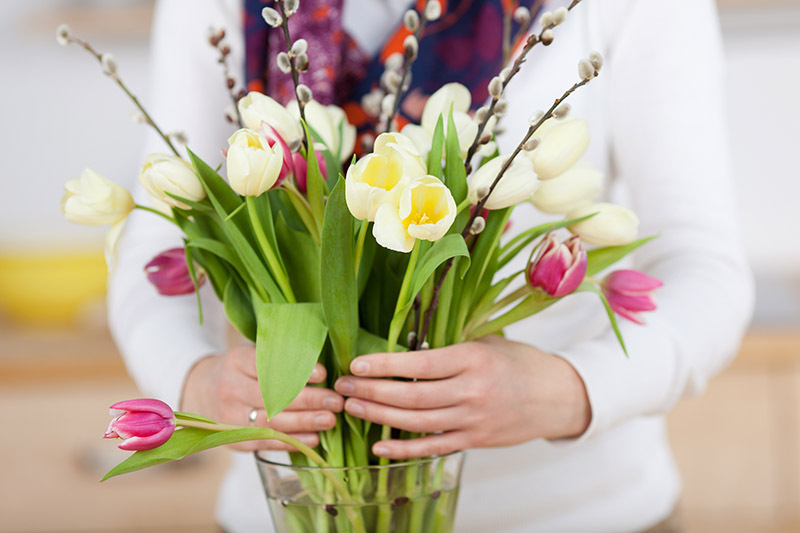Ideal Floral Arrangements for Sympathy
Posted on 05/10/2024
Sympathy flowers have long been a traditional way to express condolences and offer comfort during times of grief. They serve as a meaningful gesture to show support, love, and respect for the deceased and their families. Selecting the right floral arrangement for such occasions can be challenging, as one must consider various factors including cultural traditions, personal preferences, and the symbolic meanings of different flowers. This guide will help you navigate through the process and choose the ideal floral arrangements for expressing sympathy.
The Importance of Sympathy Flowers
Flowers have a unique way of providing comfort and solace to grieving individuals. They convey a message of life and beauty in the face of loss, serving as a visual reminder of the sympathizer's support. Sympathy flowers can be sent to the funeral home, the family's residence, or the grave site, depending on the customs and wishes of the family.

Types of Sympathy Floral Arrangements
There are several types of floral arrangements that are appropriate for expressing sympathy. Each type has its own significance and can be chosen based on the relationship with the deceased and the intended message. Here are some common types:
- Bouquets: Simple yet elegant, bouquets are versatile and can be customized with various flowers to convey specific emotions and sentiments.
- Wreaths: Circular in shape, wreaths symbolize eternal life and are commonly placed at the gravesite or used during memorial services.
- Standing Sprays: Designed to be displayed on easels, standing sprays are visually striking and often feature a mix of flowers that can be seen from a distance.
- Casket Sprays: These arrangements are placed directly on the casket and are usually chosen by immediate family members.
- Urn Arrangements: Designed to accompany cremation urns, these arrangements are typically smaller and more compact.
Choosing the Right Flowers
Different flowers carry various meanings and connotations, making it essential to choose the right type of flowers for a sympathy arrangement. Here are some popular choices and their symbolic meanings:
- Lilies: Often associated with the restored innocence of the deceased's soul, lilies are a popular choice for sympathy arrangements.
- Roses: Each color of rose has a different meaning. Red roses signify love and respect, while white roses symbolize innocence and purity.
- Carnations: These flowers are known for their long-lasting beauty. Red carnations denote admiration, while white carnations stand for pure love and innocence.
- Chrysanthemums: Generally associated with death and mourning in many cultures, chrysanthemums are a symbol of a life well-lived.
- Orchids: These exotic flowers represent eternal love and are often used in sympathy arrangements to convey everlasting affection.
Color Symbolism in Sympathy Arrangements
The colors of the flowers you choose also play a significant role in conveying your message of sympathy. Different colors evoke different emotions and can be used to express various sentiments:
- White: Represents purity, innocence, and peace. It's a common choice for sympathy flowers and funeral arrangements.
- Red: Symbolizes love, respect, and courage. Red flowers can be used to honor a close relationship with the deceased.
- Pink: Conveys grace, admiration, and gentleness. Pink flowers are often used to show compassion and sympathy.
- Yellow: Represents friendship, joy, and new beginnings. Yellow flowers can be used to celebrate the life of the deceased and offer comfort to the family.
- Purple: Symbolizes dignity, respect, and admiration. Purple flowers can be used to convey a deep sense of loss and mourning.
Personalizing Sympathy Floral Arrangements
Personalizing a sympathy floral arrangement can make your gesture even more meaningful. Here are some ways to add a personal touch:
- Incorporate the deceased's favorite flowers: Including the favorite flowers of the deceased can make the arrangement more special and memorable.
- Add a personalized message: A heartfelt note expressing your condolences and sharing a fond memory can provide comfort to the grieving family.
- Choose flowers that reflect the deceased's personality: Think about the deceased's interests and hobbies and select flowers that represent their unique character.
- Include a keepsake: Adding a small keepsake, such as a photo or a personalized ribbon, can make the arrangement more personal and touching.
Sympathy Floral Arrangements for Different Cultures
It's important to consider cultural traditions and customs when selecting sympathy flowers, as different cultures have unique practices and beliefs regarding mourning and condolences:
- Western Culture: In Western cultures, a wide variety of flowers are accepted, with lilies, roses, and chrysanthemums being popular choices. White flowers are often favored for their representation of purity and peace.
- Hindu Culture: In Hindu traditions, white flowers are commonly used, and garlands are often placed around the deceased's body. It's also customary to avoid certain flowers, such as frangipani, which are associated with temples.
- Buddhist Culture: In Buddhist traditions, white is the traditional color of mourning, and lotus flowers are highly significant as they symbolize enlightenment and spiritual growth.
- Jewish Culture: In Jewish customs, flowers are generally not a traditional part of funeral practices. Instead, it's common to send food or make a charitable donation in honor of the deceased.
- Islamic Culture: Flowers are not typically a significant part of Islamic funeral traditions, but they may be accepted by some families. It's essential to be respectful and consider the family's preferences when sending sympathy flowers.

Practical Tips for Sending Sympathy Flowers
When sending sympathy flowers, it's important to follow some etiquette and practical tips to ensure your gesture is appropriate and well-received:
- Timing: Send the flowers as soon as possible after hearing about the loss. If you are late, it's still better to send them than not at all, as they can provide comfort even after the initial period of mourning.
- Include a note: Always include a heartfelt note with your flowers to express your condolences and offer support to the grieving family.
- Consider the family's preferences: Some families may request donations to a charity in lieu of flowers. Be sure to respect their wishes and make a donation if appropriate.
- Choose appropriate arrangements: Ensure that the arrangement you choose is suitable for the setting, whether it's the funeral home, the family's residence, or the gravesite.
Conclusion
Choosing the ideal floral arrangements for sympathy requires thoughtful consideration of the symbolic meanings of flowers, color symbolism, cultural traditions, and personal preferences. By understanding these factors and adding a personal touch, you can create a meaningful and heartfelt gesture that provides comfort and support to those grieving the loss of a loved one. Sympathy flowers are a timeless way to convey your condolences and show that you care during such difficult times.


